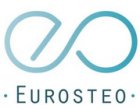Boissier Estelle - Intérêt des techniques ostéopathiques de libération fasciale sur l’endométriose : Impact sur la douleur et la qualité de vie des patientes :
Maîtres de mémoire :
- Rolland Sophie, Ostéopathe D.O.
Mémoire de fin d’études pour l’obtention du Diplôme d’ostéopathie Années 2010 – 2016 - Eurostéo - Tutrice de mémoire : Sophie ROLLAND D.O

RÉSUMÉ
Introduction : l’endométriose est une pathologie gynécologique fréquente affectant 10 à 15% de la population féminine, elle est une cause de douleurs et d’infertilité. Le traitement médical est souvent inefficace, imposant des chirurgies lourdes et mutilantes. Des alternatives thérapeutiques ont été proposées mais à notre connaissance, très peu d’études ont évalué l’intérêt d’un traitement ostéopathique [1].
Objectif : Étudier l’impact d’une prise en charge ostéopathique par des techniques de libération fasciale sur les douleurs chroniques et la qualité de vie des patientes atteintes d’endométriose.
Forme de l’étude : Cas cliniques.
Sujets et méthode : 3 patientes atteintes d’endométriose ont été traitées sur 3 cycles menstruels consécutifs par des techniques ostéopathiques de libération fasciale. Au fil des séances, nous avons mesuré l’évolution des douleurs à l’aide d’une échelle visuelle analogique et de la qualité de vie à partir du questionnaire SF 36 (fiable, validé et reproductible).
Résultats : l’étude montre une amélioration globale des signes cliniques liés à l’endométriose, comme les dysménorrhées, les dyspareunies, les dyschésies et les métrorragies. De plus, une amélioration de la qualité de vie est notée chez 2 des 3 patientes, et aucune variation notable chez l’autre patiente.
Discussion et conclusion : Les résultats encourageants de l’étude, notamment sur les douleurs comme les dysménorrhées, dyspareunies et dyschésies, pourraient nous amener à nous demander si le fait que le thérapeute connaisse en amont la localisation des kystes endométriosiques n’interfèrerait pas dans son choix des zones à traiter.
L’étude n’ayant été menée que sur 3 patientes, et le traitement ostéopathique étant ciblé sur deux régions spécifiques, petit bassin et lombo-abdominale, il serait intéressant d’envisager une nouvelle étude par une approche plus globale agissant à distance sur les douleurs de l’endométriose, avec un plus grand nombre de patientes, et ainsi comparer les résultats avec ceux de notre étude.
| MOTS-CLÉS : Endométriose – Ostéopathie – Fascia - Douleur chronique – Qualité de vie. |

ABSTRACT
Introduction : Endometriosis is a frequent gynecological pathology touching 10 to 15% of women, it is a cause of pain and infertility. The medical treatment is often not effective, making important and mutilating surgeries necessary. Alternative therapeutics have been proposed but to the best of our knowledge, only a few studies have assessed the interest of an osteopathic treatment.
Objective : Study the impact of an osteopathic care by facial release techniques on chronic pains and life quality of patients suffering from endometriosis.
Form of the study : Clinical cases.
Subjects and method : Three patients suffering from endometriosis were treated on three consecutive menstrual cycles by osteopathic facial release techniques. In the course of the seances, we measured the evolution of pains with an analog visual scale and life quality with the SF 36 questionnaire (reliable, approved and reproductible).
Results : the study shows an overall amelioration of clinic signs linked with endometriosis, such as dysmenorrhoeas, dyspareunias, dyschesias and metrorrhagias.
Moreover, an amelioration of the life quality is remarked with 2 on 3 patients, and no notable variation on the other patient.
Discussion and conclusion : The amelioration of pains and life quality is more marked with the patient on who the diagnosis was made with certainty by coelioscopy (only predictive exam for endometriosis). Also, it would seem relevant to offer an osteopathic treatment only to the patients whose coelioscopic diagnosis was made.
The study was lead onto three patients and it was focused on one particular treatment of the small pelvis and lombo-abdominal region. It could be conceivable to lead another study with a more global approach by acting at a distance way from endometriosis pains, with a larger number of patients, and compare the results with the ones of the study.
| KEYWORDS : Endometriosis – Osteopathy – Fascia - Chronic pain – Quality of life. |
SOMMAIRE
1 INTRODUCTION
1.1 ENDOMÉTRIOSE
1.1.1 DÉFINITION
1.1.2 PHYSIOPATHOGÉNIE
1.1.3 LOCALISATIONS
1.1.4 DONNÉES ÉPIDÉMIOLOGIQUES
1.1.5 SYMPTÔMES ET SIGNES CLINIQUES
1.1.6 PRISE EN CHARGE THÉRAPEUTIQUE
1.2 L’OSTÉOPATHIE
1.2.1 DÉFINITIONS ET PRINCIPES
1.2.2 OSTÉOPATHIE ET ENDOMÉTRIOSE
1.3 LES FASCIAS
1.3.1 DÉFINITION
1.3.2 EMBRYOLOGIE ET HISTOLOGIE
1.3.3 PROPRIÉTÉS ET FONCTIONS
1.3.4 ANATOMIE GÉNÉRALE ET RÔLE DES FASCIAS
1.4 TECHNIQUES OSTÉOPATHIQUES DE LIBÉRATION FASCIALE
1.4.1 LE PRINCIPE TECHNIQUE
1.4.2 MÉTHODOLOGIE DE LA PALPATION FASCIALE
1.4.3 TECHNIQUES OSTÉOPATHIQUES D’ÉQUILIBRE D’ÉCHANGES RÉCIPROQUES
2 MATÉRIEL ET MÉTHODE
2.1 MATÉRIEL UTILISÉ
2.1.1 EVA
2.1.2 QUESTIONNAIRE SF
2.1.3 FICHE PATIENTE
2.2 MÉTHODE UTILISÉE ET PRÉSENTATION DE L’ÉTUDE
2.2.1 TYPE ET DURÉE DE L’ÉTUDE
2.2.2 POPULATION A L’ÉTUDE
2.2.3 VARIABLES ÉTUDIÉES
2.2.4 DESCRIPTIF DES SÉANCES OSTÉOPATHIQUES
2.2.5 PROTOCOLE DE TESTS
2.2.6 PROTOCOLE DE CORRECTIONS RÉSULTATS
3. RÉSULTATS
3.1 DONNÉES ÉPIDÉMIOLOGIQUES DES PATIENTES
3.2 SYMPTÔMES ET SIGNES CLINIQUES DES PATIENTES A L’ÉTUDE
3.3 ZONES EN RESTRICTION DE MOBILITÉ AU NIVEAU DES UNITÉS FONCTIONNELLES LOMBO-ABDOMINALE ET BASSIN (UFLA ET UFB)
3.4 DOULEUR DES PATIENTES
3.5 QUALITÉ DE VIE DES PATIENTES
4 ANALYSE DES RÉSULTATS
4.1 DONNÉES ÉPIDÉMIOLOGIQUES DES PATIENTES
4.1.1 CARACTÉRISTIQUES SOCIO-ÉCONOMIQUES ET ANTÉCÉDENTS
4.1.2 HISTOIRE DE LA MALADIE
4.2 ÉVOLUTION DES SIGNES CLINIQUES ET DE LA DOULEUR
4.3 ÉVOLUTION DE LA QUALITÉ DE VIE
5 DISCUSSION
CONCLUSION
BIBLIOGRAPHIE
LIENS INTERNET
TABLE DES ILLUSTRATIONS
ANNEXES
MÉMOIRE en PDF




